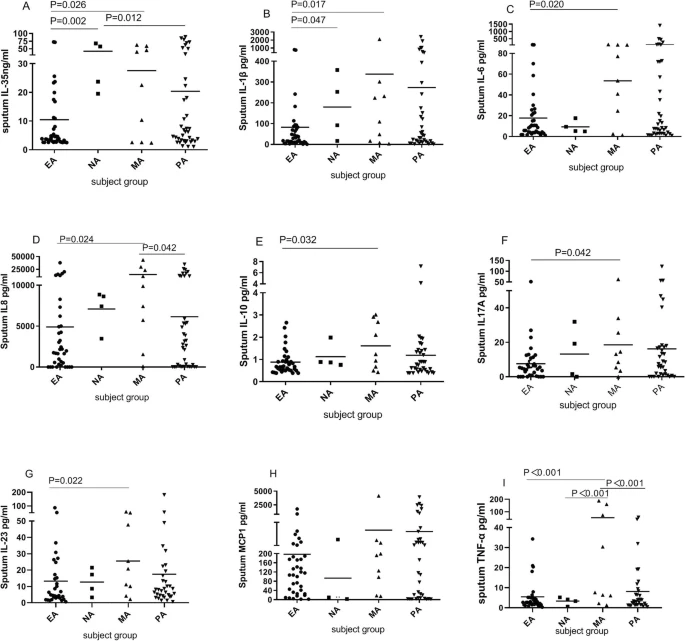Research – Open Access
Wei Li, Ruihan Gao, Tong Xin & Peng Gao
Respiratory Research volume 21, Article number: 89 (2020)
Abstract
Background
Interleukin (IL)-35 is a newly discovered inhibitory cytokine which is produced by regulatory B and T lymphocytes and belongs to the IL-12 family. It plays a suppressive role in human inflammatory diseases; however, its role in asthma phenotypes is unclear. Our study focuses on the sputum IL-35 level in patients and investigates different airway inflammation capacities of sputum IL-35 in patients with different asthma phenotypes.
Objective
We aimed to determine the sputum IL-35 levels in asthmatic patients with clinical remission phenotypes and control subjects and to investigate possible correlations among lung function, age, sex, fractional exhaled nitric oxide (FeNO), and smoking history in these phenotypes.
Methods
Sputum samples were collected from patients with clinical asthma remission (n = 89, 37 males, age 52.24 ± 13.32 years) and a healthy control group (n = 19, 9 males, age 44.58 ± 16.3 years). All subjects underwent sputum induction. Induced sputum was assessed for inflammatory cell count, and sputum levels of IL-35 and other cytokines were measured by ELISA and Cytometric Bead Array, respectively.
Results

Sputum IL-35 (median (q1, q3)) levels showed no significant difference between asthma patients (4.89 ng/mL (2.97, 22.75)) and healthy controls (6.01 ng/mL (4.09, 30.47)). However, the sputum IL-35 level was significantly reduced in patients with eosinophilic asthma (EA) (3.95 ng/mL (2.80, 11.00)) compared to patients with neutrophilic asthma (NA) (40.59 ng/mL (20.59, 65.06), p = 0.002), paucigranulocytic asthma (PA) (6.25 ng/mL (3.10, 24.60), p = 0.012), and mixed granulocytic asthma (MA) (22.54 ng/mL (2.58, 52.45), p = 0.026). IL-35 levels in sputum showed a positive correlation with sputum neutrophil cells and a negative correlation with FeNO, FEV1% predicted, and FVC predicted. Furthermore, sputum IL-35 had a significant positive association with Th1-related factors and a negative correlation with Th2-related factors.
Conclusions
Sputum IL-35 is likely involved in different pathophysiological mechanisms of NA and EA and exerts different effects in asthma phenotypes.
